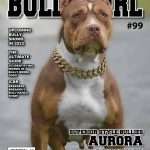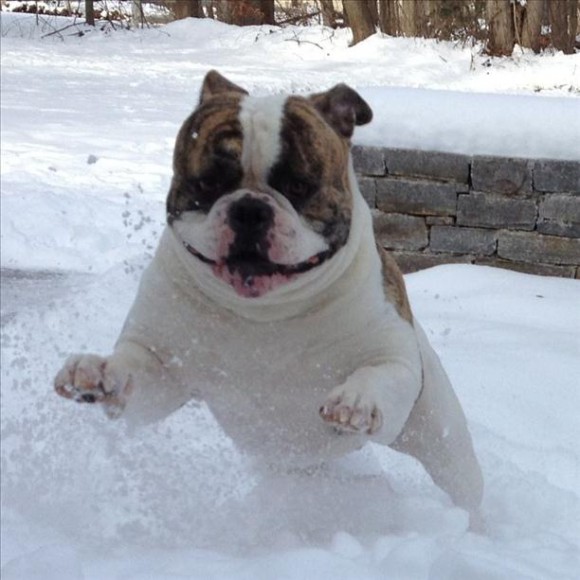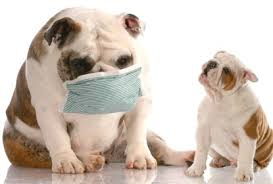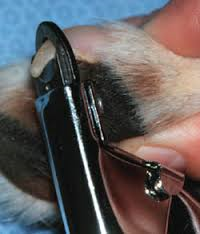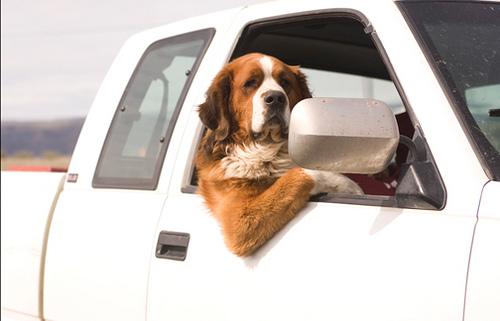
Many parts of the country experience extremely cold weather that presents challenges for dog owners. Familiarity with cold weather health hazards can keep your pet safe while allowing both of you to enjoy the outdoors.
Temperature Related Conditions
Puppies, senior dogs and dogs with certain disease conditions (such as thyroid conditions) are more susceptible to cold temperatures. Temperature related illnesses require immediate removal to a warm, dry environment and medical attention by your veterinarian.
Hypothermia can result from extended exposure to cold and is a life-threatening condition. Watch your dog for signs of shivering, shallow breathing, weak pulse or lethargy.
Frostbite is a temperature related tissue injury and most commonly occurs on ears, tails, scrotum or feet. Signs include discolored skin (red, pale, or grayish) swelling, or blisters. Check your pet often for signs of frostbite which may be hidden beneath fur.
Cold-weather Chemicals
Antifreeze – Ethylene Glycol, car antifreeze, is a deadly poison and has a sweet taste that appeals to dogs. As little as 1-2 teaspoons can be lethal to a small animal. Clean up all spills and consider switching to a Propylene Glycol product that is safer.
Ice Melters – Salt and ice-melters can act as a skin irritant. Make sure to wash your pet’s feet off after coming indoors. Dogs with long fur and /or short legs should have their stomach areas cleaned off as well.
Winter Grooming
If you normally have your pet’s fur clipped or shaved, keep the length longer in winter to keep your dog warm.
Nails may require more frequent trimming since your dog is spending more time indoor on soft surfaces.
If you bathe your dog at home make sure he is completely dry before going out. You may even want to switch to a waterless shampoo for the winter.
Examine the pads of your dog’s feet for signs of cracking or irritation. A pet-specific foot balm will help condition the pads.
Cold-Weather Outings
Dogs with short coats or low body fat (Chihuahuas, Greyhounds, miniature Pinschers etc.) will benefit from a water-resistant sweater or coat when outdoor temperatures drop.
Boots are a good way to protect feet and pads from salt and chafing.
Keep your pet on a leash in cold weather – more dogs are lost in the winter than in any other season. Unleashed dogs may also run onto partially frozen bodies of water.
Limit the duration of your outdoor trips to minimize chance of frostbite or hypothermia.
Don’t let your dog eat snow. The snow may cause stomach upset or there may be hidden objects in the snow.
Special Considerations for Outdoor Dogs
You should bring your dogs inside for the winter if at all possible.
If bringing your dogs inside for the season is not possible your dogs must have warm, windproof shelter – preferably heated.
Dry, clean bedding is essential to keeping warm and straw or bedding needs replenished all winter season long.
Water & food can easily freeze. Use heated bowls to prevent freezing and make sure that the electrical cords are out of reach of your pets.
Outdoor dogs will burn more calories (up to 30%) and need extra food. Make sure that you are feeding additional rations during cold temperature.
Winter Training Tips
Basic obedience training and cold weather safety practices will allow you and your pet to enjoy winter weather conditions safely.
Make sure that your dog or puppy is comfortable with having their feet wiped & handled. Keep towels near the door and making foot-wiping part of your daily routine. Reward your pet for allowing you to examine the condition of pads, check for ice in between toes, and trim fur (if required.)
Obedience training for loose leash walking will make slippery walks safer for both pet and owner.
Commands like “leave it” can save a dog’s life when confronted with a pool of antifreeze or an unknown object in the snow.
Recall (coming when called) can keep a dog from running onto a partially frozen body of water or away from another winter hazard.





